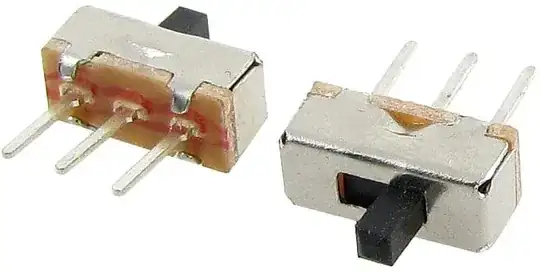Since it has two possible positions, and three pins, you have a connection between pin 1 and 2 when position 1 is selected, and between pin 1 and 3 when position 2 is selected.
As BSF comment below, the middle pin is common. This means it will be connected to the outside pins depending on where the switch is moved towards.
However, you always can verify this, in the following way:
To find out which is pin 1, pin 2 and pin 3, use a multimeter. Set it to continuity mode, or if you don't have that mode, to resistance mode, and put the red/black probes to two random pins. Check if the resistance is 0, in that case you know those two pins will be connected when position 1 is selected. If there is resistance, try other pins with the probes, until you know which are connected.
Than switch the position, and do it again.
Instead of a multimeter you also can 'hardwire' it to e.g. 5V -> pin 1, pin 2 -> resistor of 220 ohm -> LED -> GND
And change pin 1 and pin 2 until you found which pins connect for which positions.
To use it for you Arduino, check for a normal simple switch example, but these are two in one, one for each position.
